We say it with pride quite regularly, our amazing staff in corporate and senior living fitness centers are what help us serve our clients so well. Their strong educational background in health and fitness helps us set the bar high while their exceptional creativity and relationship building skills allows them to keep their members engaged and asking what’s coming next. Since we have the privilege of getting to know our staff across the country, we thought our followers might like to as well. Join us monthly as we throw a different NIFS team member a High Five.
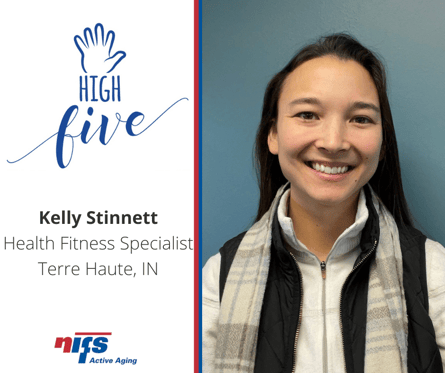 Name: Kelly Stinnett
Name: Kelly Stinnett- City, State: Terre Haute, IN
- Years with NIFS: 2.5 years
- Position: Per Diem Health Fitness Specialist
- What brought you to NIFS: I was already in the community teaching other exercise classes and I was happy to come on board with NIFS for staff coverage and greater opportunities to grow.
- What is the most impactful moment you have shared with a member: I see a lot of little moments as the most impactful "moment" with not just one but a handful of individuals. They appreciate what I do and take the time to walk up after class and say "good job" or "thank you for being here". The majority of members I get to see on a regular basis treat me like a friend and may pop their head into the office just to extend another sincere thank you. These are little things that I cherish and consider most impactful!
- What separates a NIFS fitness pro from the rest: The NIFS resources and network allow program managers to bring new, creative, and thoughtful ways to keep incorporating much needed movement and activity into everyone’s lives who are recipients of a NIFS pro.
- What is your favorite thing about working at your client site: Relationships with members and the wonderful sense of fulfillment I get with this position.
- What motivates you: Knowing that every exercise class/program provided is creating a better quality of life for members but also for myself as I get to enjoy the exercises and socializing that is so important for aging adults.
- What is your favorite hobby: A favorite is hard to choose. Everything outdoors, especially in the sun, would be on the top of the list. Hiking, biking, running; playing with a frisbee, football, or volleyball. Thankfully my husband and step-daughter are the same in this way and whenever we get a chance to take a trip to the park, we pack ALL of the things into the car (even a hammock, book, and guitar), never actually able to do everything, but we have them just in case!
Interested in learning more about our staffing services? Click below for what best fits your needs.

 We are on the brink of a New Year and those looming resolutions start filling our head with what we should do or consider changing. Keep a positive mindset to not allow resolutions to fall to the wayside in the New Year, allow them to become lifestyle changes. Know that when you fall short, it's ok to give your self a restart. Check out these nine nutrition-related New Year's resolutions to not only set, but stick to.
We are on the brink of a New Year and those looming resolutions start filling our head with what we should do or consider changing. Keep a positive mindset to not allow resolutions to fall to the wayside in the New Year, allow them to become lifestyle changes. Know that when you fall short, it's ok to give your self a restart. Check out these nine nutrition-related New Year's resolutions to not only set, but stick to. 

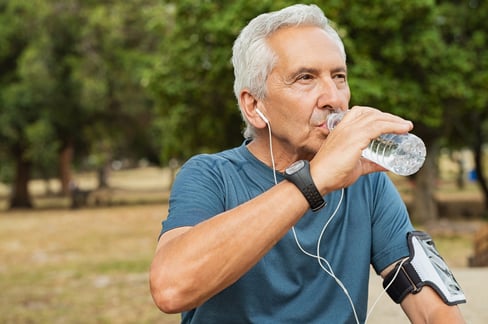 If music is good for the mind, and exercise is good for the body why not combine the two at the same time?
If music is good for the mind, and exercise is good for the body why not combine the two at the same time?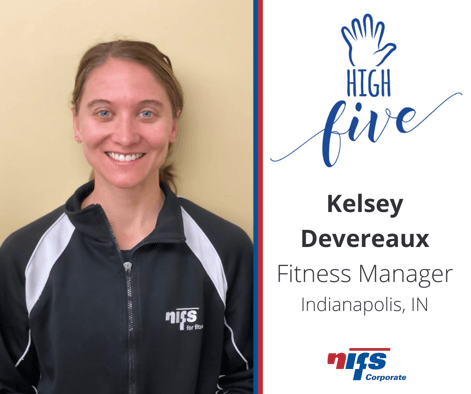
.jpg?width=486&name=winter%20exercise%20GettyImages-1048608792%20(1).jpg) When winter blows in and the days start to get shorter and colder, you can pull the blankets over your head and hibernate—or you can suit up and head outside for an outdoor winter adventure. Exercising in colder weather has distinct advantages over working out in warmer weather, so there is no reason to take a break when the temperatures drop. There are a number of advantages to working out in colder weather that most people disregard.
When winter blows in and the days start to get shorter and colder, you can pull the blankets over your head and hibernate—or you can suit up and head outside for an outdoor winter adventure. Exercising in colder weather has distinct advantages over working out in warmer weather, so there is no reason to take a break when the temperatures drop. There are a number of advantages to working out in colder weather that most people disregard.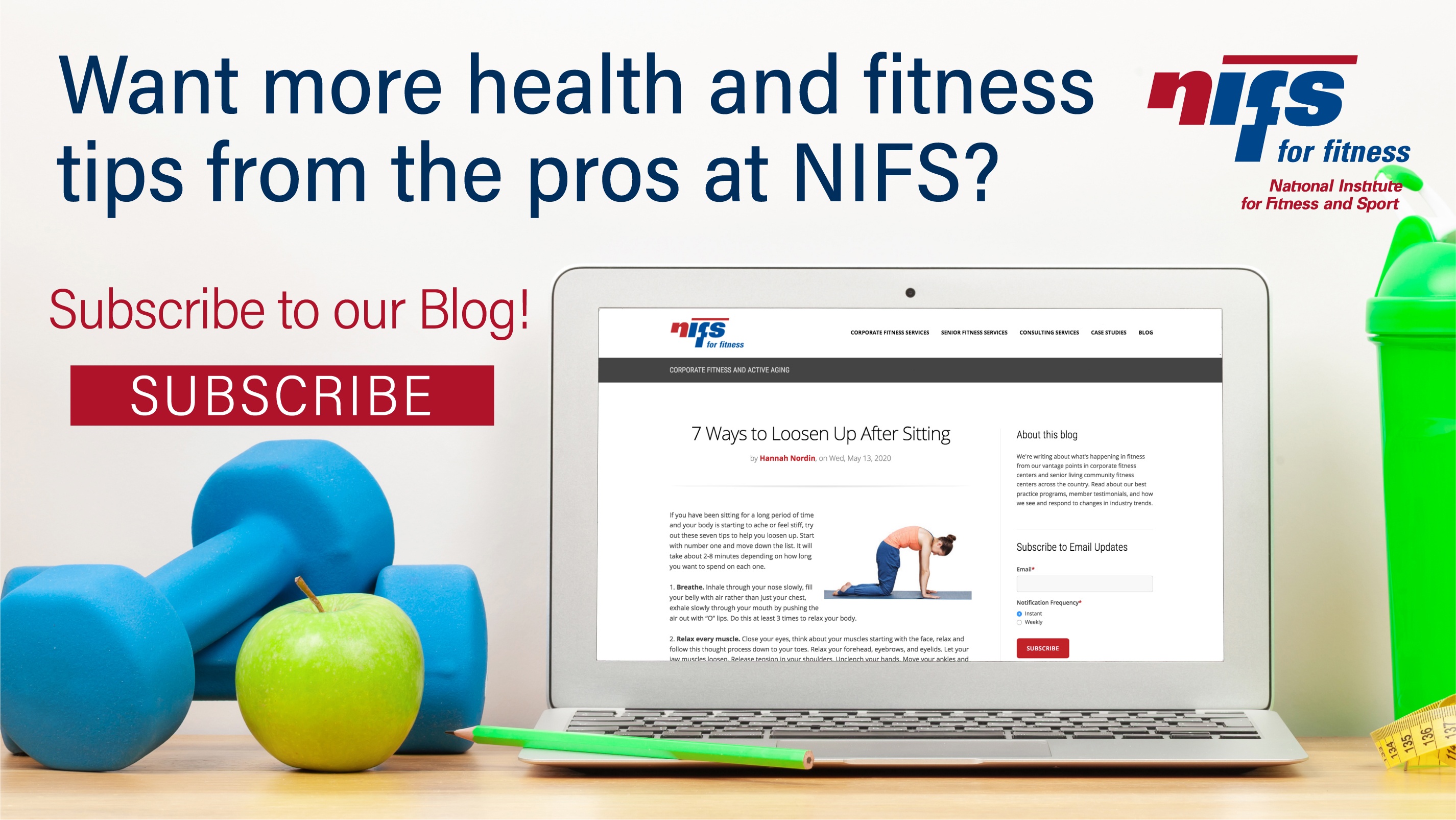
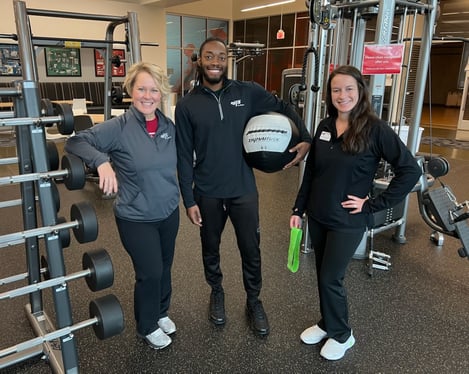 Daily headlines remind employers of what they are already feeling with the squeeze to find qualified candidates to fill the record-setting job openings across nearly every industry. And for HR professionals responsible for hiring in senior living or corporate fitness centers, it may already be challenging enough to recognize the necessary skills when hiring a fitness professional who can cultivate the engaging onsite fitness center you desire. In the past couple of months, I have heard from multiple fitness management clients that they are grateful that they are partnered with NIFS to manage their fitness center personnel as its one less department they have to worry about as time, resources and candidate pools are stretched thin with staffing struggles.
Daily headlines remind employers of what they are already feeling with the squeeze to find qualified candidates to fill the record-setting job openings across nearly every industry. And for HR professionals responsible for hiring in senior living or corporate fitness centers, it may already be challenging enough to recognize the necessary skills when hiring a fitness professional who can cultivate the engaging onsite fitness center you desire. In the past couple of months, I have heard from multiple fitness management clients that they are grateful that they are partnered with NIFS to manage their fitness center personnel as its one less department they have to worry about as time, resources and candidate pools are stretched thin with staffing struggles.
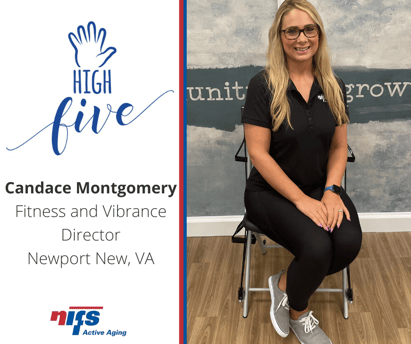 Name:
Name: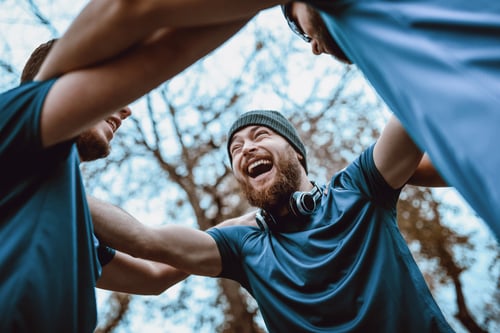 The impact of physical activity on mood has been researched over the last few decades. There has been speculation that an increase in physical activity can provide a substantial positive impact on one’s mood, but to what extent? Let’s dive into the known relationship between physical activity and mood, how much of an effect physical activity can have, and finally will provide a few brief explanations over the mechanisms of which physical activity increases mood!
The impact of physical activity on mood has been researched over the last few decades. There has been speculation that an increase in physical activity can provide a substantial positive impact on one’s mood, but to what extent? Let’s dive into the known relationship between physical activity and mood, how much of an effect physical activity can have, and finally will provide a few brief explanations over the mechanisms of which physical activity increases mood!